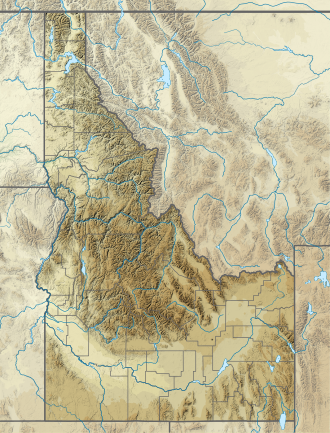| Bear Lake State Park | |
|---|---|
 Bear Lake seen from the park | |
| Location | Bear Lake County, Idaho, United States |
| Nearest city | St. Charles, Idaho |
| Coordinates | 42°01′45″N111°15′28″W / 42.02917°N 111.25778°W [1] |
| Area | 966 acres (391 ha) [1] |
| Elevation | 5,900 ft (1,800 m) [1] |
| Established | 1969 [2] |
| Administered by | Idaho Department of Parks and Recreation |
| Visitors | 162,787(in 2014-2015) (expressed as Total Visitor Days) [3] |
| Website | Official website |
Bear Lake State Park (sometimes called North Beach State Park) is a public recreation area bordering the north and eastern shores of Bear Lake in the southeast corner of Bear Lake County, Idaho, near the Utah and Wyoming state lines. The state park sits across the lake from St. Charles and is fifteen miles (24 km) south of Montpelier. [4] Bear Lake National Wildlife Refuge lies adjacent to the park's north unit.

